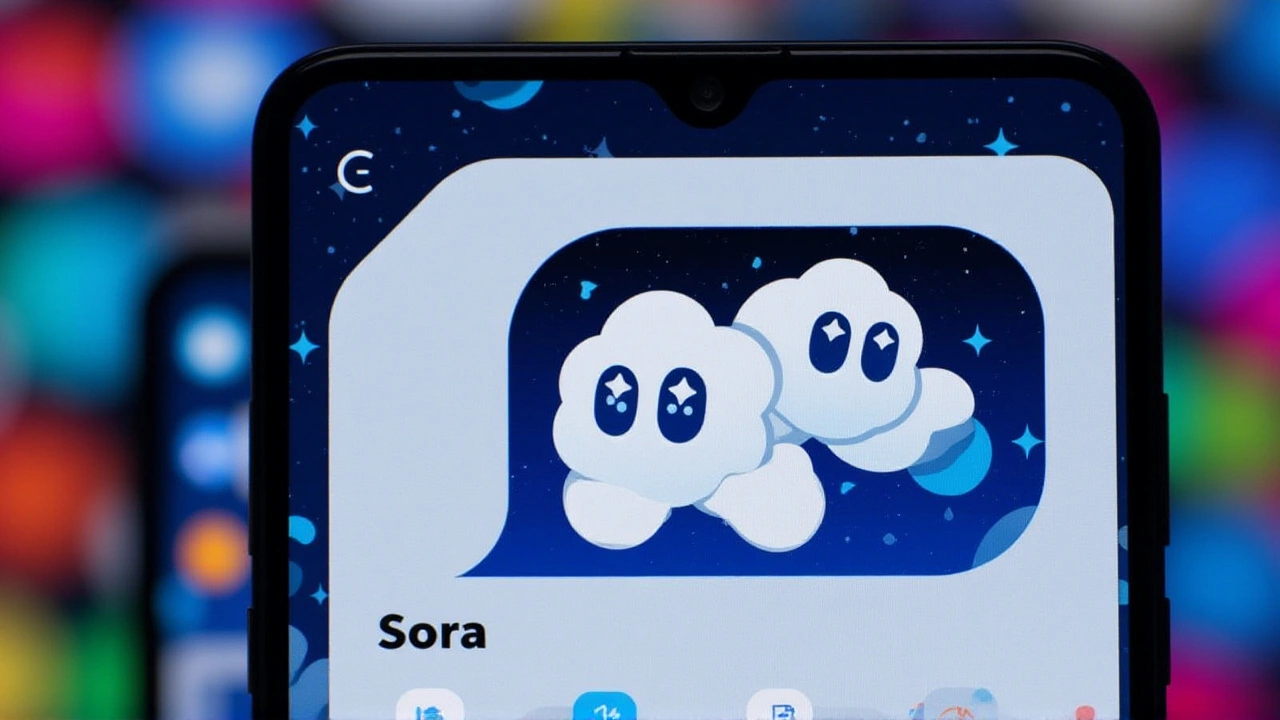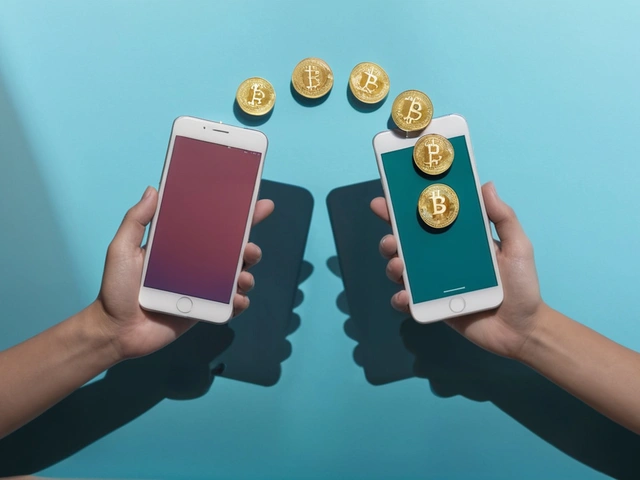
When OpenAI saw its video‑generation app Sora leap to the top of the Apple U.S. App Store, the tech world sat up straight. The surprise came on October 3, 2025, and it mattered because the app was still operating on an invite‑only, U.S.‑and‑Canada‑only model. John Gruber, founder of Daring Fireball, warned that the climb also sparked a wave of copycat apps that could confuse users outside those borders.
What Sora Actually Does
Sora, officially listed as “Sora by OpenAI” (App Store ID 6744034028), promises a new kind of creative outlet: type a text prompt or drop in an image, and the system spins out a hyper‑real video with synchronized sound in seconds. Users can pick styles ranging from cinematic and photorealistic to cartoonish or outright surreal. The tagline, “if you can write it, you can see it, remix it, and share it,” captures the core idea – turn imagination into moving pictures without a camera.
The app also doubles as a social playground. You can cast yourself or friends, remix trending challenges, or extend an existing storyline by swapping characters or changing the atmosphere. All creations live on a community feed where others can like, comment, and reuse clips, turning the platform into a rapid‑fire video laboratory.
How Sora Jumped to #1
Despite being limited to users in the United States and Canada, Sora vaulted to the number‑one slot in the U.S. App Store’s “Top Free” category within days of its release. The surge was fueled by a combination of factors:
- Massive social media buzz, especially on TikTok, where creators posted quick demos of AI‑generated clips.
- Press coverage highlighting the novelty of real‑time AI video synthesis.
- Word‑of‑mouth among early‑access invitees who shared invite links on Discord and Reddit.
By October 4, the app had amassed over 1.2 million downloads, according to internal Apple metrics shared with journalists. Even with a capped audience, the sheer velocity of installs eclipsed many mainstream entertainment apps.
Invite‑Only Model and Geographic Limits
OpenAI deliberately kept Sora invite‑only, citing the need to "manage compute load" and "ensure safety" while the model continues to be refined. The restriction to North America means that users in Europe, Asia, or South America see a conspicuous blank when they search for Sora in their local App Stores.
This geographic gatekeeping has a double‑edged effect. On one hand, it builds hype – scarcity makes the app feel exclusive. On the other, it leaves a vacuum that opportunistic developers love to fill.
Clone App Flood and Risks for International Users
Within 48 hours of Sora’s U.S. chart‑topping debut, at least twelve look‑alike apps appeared across international Apple App Stores. The most visible impersonator, titled “Sora 2: AI Video Generator,” claimed the ninth spot in the “Top Photo & Video Apps” list. These clones often borrow OpenAI’s official logo, and one even slipped in a subtitle referencing Google’s Veo 3 model.
Most of the knock‑offs operate on a subscription model that charges users $9.99 per week – a stark contrast to OpenAI’s free‑tier invitation system. Because the legitimate Sora isn’t available outside North America, unsuspecting users may unwittingly shell out for a fake product, exposing themselves to potential privacy breaches and unauthorized data collection.
John Gruber highlighted the issue on his Daring Fireball blog on October 4, noting that “the average user in Berlin or Tokyo now sees a string of ‘Sora’ apps, none of which are the real thing.” He warned that the phenomenon is “a textbook case of brand impersonation in the mobile marketplace.”
Industry Reactions and Expert Insight
Security analyst Maya Patel of CyberShield Labs said, “When a high‑profile AI tool becomes a cultural moment, it inevitably spawns a cottage industry of imitators. The real danger isn’t the branding clash; it’s the hidden permission requests and data harvesting that can accompany these copycats.”
Apple’s App Review team reportedly tightened scrutiny on apps that mimic well‑known brands, but the sheer volume of submissions makes enforcement a moving target. Meanwhile, OpenAI’s legal counsel reminded users that the official app’s terms of service and privacy policy are only accessible through the genuine “Sora by OpenAI” listing.
What This Means for the Future of AI‑Powered Creative Tools
Sora’s breakout success, even within a limited rollout, signals strong consumer appetite for on‑the‑fly video generation. Investors are already flagging the space as a potential “next big thing” after text‑to‑image tools like DALL·E.
However, the clone backlash underscores a pressing need for clearer marketplace governance. If Apple and Google can’t police brand misuse quickly, users may lose trust in legitimate AI products, slowing adoption.
OpenAI has hinted at a broader global release later this year, contingent on “robust safety mitigations.” Should that happen, we could see a wave of legitimate competitors stepping up, prompting a new era of AI‑driven media creation – and, inevitably, fresh rounds of imitation.
Frequently Asked Questions
Why is Sora only available in the United States and Canada?
OpenAI says the limited rollout lets them control compute costs and monitor safety issues while the model is still being fine‑tuned. Expanding worldwide will require additional safeguards against misuse.
How can users tell if an app is a genuine Sora download?
The official app is listed as “Sora by OpenAI” with App Store ID 6744034028 and shows OpenAI as the developer. Any app that merely uses the name “Sora” without OpenAI listed as the publisher, especially those that charge a weekly fee, is likely a copycat.
What are the main risks of using the clone apps?
Beyond misleading pricing, many impostor apps request extensive permissions that could expose personal data. They also lack OpenAI’s safety filters, increasing the chance of generating harmful or copyrighted content.
When might Sora become available globally?
OpenAI has not set a firm date, but executives indicated a target of late 2025 or early 2026, provided they can roll out robust content‑moderation tools and secure enough server capacity.
How does Sora compare to other AI video tools like Runway or Synthesia?
Sora focuses on instant, text‑to‑video generation on a mobile device, whereas Runway and Synthesia target professional creators with desktop‑grade editing and branding features. Sora’s strength lies in speed and accessibility for casual users.
October 6, 2025 AT 20:41
While the rapid adoption underscores strong user interest, it is imperative that OpenAI continues to enforce rigorous safety protocols and transparent data practices to maintain trust among creators.
October 6, 2025 AT 20:58
I’ve seen a few creators experiment with Sora’s “quick remix” feature, and it really lowers the barrier for storytelling. The community feed can become a vibrant showcase if moderation stays proactive.
October 6, 2025 AT 21:15
Honestly, the clone flood feels like opportunistic copy‑cats trying to cash in on hype – it’s a reminder that not every shiny new app is legit 😒.
October 6, 2025 AT 21:31
Sora’s invite‑only rollout is smart from a compute standpoint but it also creates scarcity that fuels the clone market the moment word spreads the buzz and users scramble for alternatives that promise the same magic but cost a premium
October 6, 2025 AT 21:48
It’s no surprise an American‑born AI like Sora climbs to the top; we lead in innovation and should safeguard our homegrown products from foreign knock‑offs.
October 6, 2025 AT 22:05
From a platform‑engineering perspective, the latency improvements in Sora’s on‑device inference pipeline are noteworthy, especially given the constraints of mobile GPU scheduling and memory bandwidth.
October 6, 2025 AT 22:21
The emergence of Sora marks a pivotal moment in the democratization of AI‑generated media,! It forces us to confront the ethical dimensions of instantaneous visual creation,! While the allure of “type‑and‑watch” is undeniable, the underlying data pipelines demand rigorous oversight,! Users are presented with a seamless interface, yet the model’s training corpus remains opaque,! This opacity raises legitimate concerns about bias propagation, especially when stylistic presets echo culturally specific tropes,! Moreover, the rapid diffusion of clone applications, which often sidestep privacy safeguards, amplifies the risk of data misuse,! The subscription‑based impostors, charging $9.99 per week, exploit consumer excitement without delivering comparable safety filters,! From a jurisprudential standpoint, the brand impersonation observed across app stores challenges existing intellectual property frameworks,! Legal recourse may be slow, but proactive community reporting can mitigate immediate harm,! Developers should incorporate transparent permission disclosures, and platforms must enforce stricter vetting processes,! On the societal level, the ease of generating hyper‑real video content could erode trust in visual evidence, a phenomenon already evident in deepfake discourse,! Educational initiatives that teach media literacy will become indispensable, especially for younger demographics,! Yet, we must also celebrate the creative empowerment Sora provides to everyday users, enabling narratives that were previously inaccessible,! The balance between empowerment and regulation is delicate, requiring dialogue among technologists, ethicists, and policymakers,! As the technology matures, incremental rollout strategies, similar to the current invite‑only model, may serve as prudent stop‑gaps,! Ultimately, the trajectory of AI video synthesis will hinge on our collective willingness to embed responsibility into innovation,!
October 6, 2025 AT 22:38
The official “Sora by OpenAI” listing (App Store ID 6744034028) remains the definitive source; users should verify the developer field to avoid fraudulent alternatives.
October 6, 2025 AT 22:55
Just a heads‑up: if you see a Sora app charging a weekly fee, it’s almost certainly a copycat – stay safe! 👍
October 6, 2025 AT 23:11
One could argue that the clone phenomenon is not merely parasitic but also a catalyst for market segmentation, prompting OpenAI to refine its value proposition and perhaps introduce tiered access models.
October 6, 2025 AT 23:28
In summary the situation underscores the need for tighter app‑store governance and clearer user education.
October 6, 2025 AT 23:45
People keep falling for cheap knock‑offs because they don’t read the fine print – get smarter or stay broke 😂.






October 6, 2025 AT 20:25
Congrats to OpenAI-Sora is a game‑changer, and the hype is well deserved 😊.